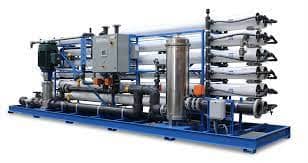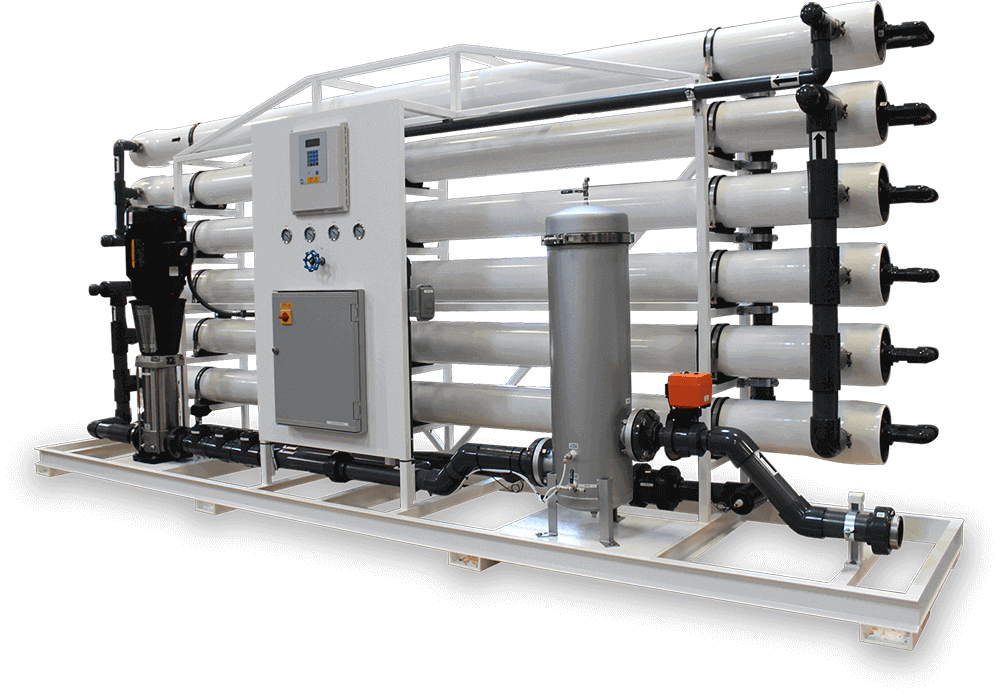Description
Brackish Water Reverse Osmosis Systems
If you are looking for a reliable and efficient way to treat brackish water, reverse osmosis (RO) is the best option. Brackish water has a higher salt content than freshwater but lower than seawater, which makes it unsuitable for drinking, irrigation, and industrial applications. However, with a brackish water reverse osmosis (BWRO) system, you can remove the impurities and make it safe for use. In this article, we will provide you with all the information you need to know about brackish water reverse osmosis systems.
What Is a Brackish Water Reverse Osmosis System?
A BWRO system is a water treatment technology that uses a semi-permeable membrane to remove impurities and contaminants from brackish water. The process of reverse osmosis involves applying pressure to the feedwater, forcing it through the membrane, and leaving behind a concentrated brine stream. The purified water is collected in a permeate stream and sent to a storage tank for use.
How Does a Brackish Water Reverse Osmosis System Work?
A BWRO system consists of several components that work together to purify the brackish water. These components include:
1. Pre-treatment
Before the water enters the RO membrane, it undergoes pre-treatment to remove large particles, suspended solids, and other impurities. Pre-treatment can involve several processes, such as filtration, coagulation, flocculation, and sedimentation.
2. High-Pressure Pump
The high-pressure pump is responsible for increasing the water pressure and pushing it through the RO membrane. The pump ensures that the water flow is consistent and that the membrane is not damaged.
3. Reverse Osmosis Membrane
The RO membrane is the heart of the BWRO system. It is a semi-permeable membrane that allows water molecules to pass through but blocks salt, minerals, and other impurities. The membrane consists of several layers of thin film sheets that are rolled into a spiral-wound configuration.
4. Post-treatment
After the water passes through the RO membrane, it undergoes post-treatment to balance the pH and mineral content. Post-treatment can involve several processes, such as remineralization, pH adjustment, and disinfection.
Why Do You Need a Brackish Water Reverse Osmosis System?
There are several reasons why you need a BWRO system for your brackish water treatment needs:
1. Safe Drinking Water
If you rely on brackish water as your primary source of drinking water, a BWRO system can remove the impurities and make it safe for consumption. BWRO systems can remove up to 99% of dissolved solids, including salt, minerals, and other contaminants.
2. Irrigation and Agriculture
Brackish water can be used for irrigation and agriculture, but it can damage crops and soil if it has high salt content. With a BWRO system, you can remove the excess salt and minerals and make the water suitable for irrigation and agriculture.
3. Industrial Applications
Brackish water is often used in industrial applications, such as power generation, oil and gas drilling, and manufacturing. However, the high salt content can cause scaling, corrosion, and other problems in equipment and machinery. With a BWRO system, you can reduce the salt content and protect your equipment from damage.
Benefits of Brackish Water Reverse Osmosis Systems
BWRO systems offer several benefits over other brackish water treatment technologies:
1. High Recovery Rates
BWRO systems have high recovery rates, which means that they can produce more purified water per unit of feedwater than other technologies. This makes them more efficient and cost-effective.
2. Low Energy Consumption
BWRO systems require less energy to operate than other technologies, such as thermal desalination. This makes them more environmentally friendly and reduces operational costs.
3. Easy Maintenance
BWRO systems have a simple design and require minimal maintenance. They have fewer moving parts than other technologies, which reduces the risk of mechanical failure.
4. Flexibility
BWRO systems can be customized to meet specific water quality and quantity requirements. They can be used in a variety of applications, from small residential systems to large industrial installations.
Choosing the Right Brackish Water Reverse Osmosis System
When choosing a BWRO system, there are several factors to consider:
1. Water Quality
The water quality of your feedwater will determine the type of pre-treatment and post-treatment needed for your system. The level of dissolved solids, suspended solids, and other impurities will also affect the type of RO membrane required.
2. Water Quantity
The amount of purified water you need will determine the size and capacity of your system. Larger systems will require more space and may have higher installation and operational costs.
3. Budget
Your budget will determine the type and quality of the components used in your system. Lower-quality components may be more affordable, but they may not last as long or perform as well as higher-quality components.
4. Service and Support
Make sure to choose a reputable supplier who can provide service and support for your system. Look for suppliers who offer warranties, maintenance plans, and technical support.
Installation and Maintenance of Brackish Water Reverse Osmosis Systems
BWRO systems require professional installation and regular maintenance to ensure optimal performance and longevity. Here are some tips for installation and maintenance:
1. Professional Installation
Have your BWRO system installed by a professional who has experience with water treatment systems. Improper installation can lead to leaks, mechanical failure, and reduced system performance.
2. Regular Maintenance
Schedule regular maintenance for your system, including membrane cleaning, filter replacement, and pump inspection. Follow the manufacturer’s recommendations for maintenance intervals and procedures.
3. Water Quality Monitoring
Monitor the quality of your purified water regularly to ensure that your system is working properly. Test for pH, TDS, and other parameters to ensure that your system is removing impurities and producing safe water.
Conclusion
Brackish water reverse osmosis systems are an effective and efficient way to treat brackish water for a variety of applications. They offer high recovery rates, low energy consumption, and easy maintenance. When choosing a BWRO system, consider the water quality, water quantity, budget, and service and support. With proper installation and maintenance, your BWRO system can provide you with safe, high-quality water for years to come.
FAQs
- How does a BWRO system differ from a SWRO system?
A BWRO system is designed to treat brackish water, which has a lower salt content than seawater. SWRO systems are designed to treat seawater, which has a higher salt content. The membranes used in BWRO systems are also different from those used in SWRO systems.
- How much does a BWRO system cost?
The cost of a BWRO system depends on several factors, such as the size, capacity, and quality of the components used. Smaller residential systems can cost a few thousand dollars, while larger industrial systems can cost several hundred thousand dollars.
- Can a BWRO system remove viruses and bacteria from water?
Yes, a BWRO system can remove viruses and bacteria from water. However the system must be designed to do so, and the RO membrane must have a pore size small enough to filter out these contaminants. Additional disinfection may also be required to ensure that the water is safe for consumption.
- How often do I need to replace the RO membrane?
The lifespan of the RO membrane depends on several factors, such as the water quality, system design, and operating conditions. In general, RO membranes can last anywhere from 2 to 5 years, but they may need to be replaced more frequently if the water quality is poor or if the system is not properly maintained.
- Can a BWRO system be used for desalination?
Yes, a BWRO system can be used for desalination, but it may not be as effective as an SWRO system. Brackish water has a lower salt content than seawater, which means that the RO membrane must be able to filter out smaller particles. Additionally, the pre-treatment and post-treatment processes may need to be modified to accommodate the lower salt content of brackish water.








Aqua Filter –
Aquaafilter is the best water filter company around. Their staff is prompt, professional, and always willing to help. I would highly recommend them to anyone in need of their services.